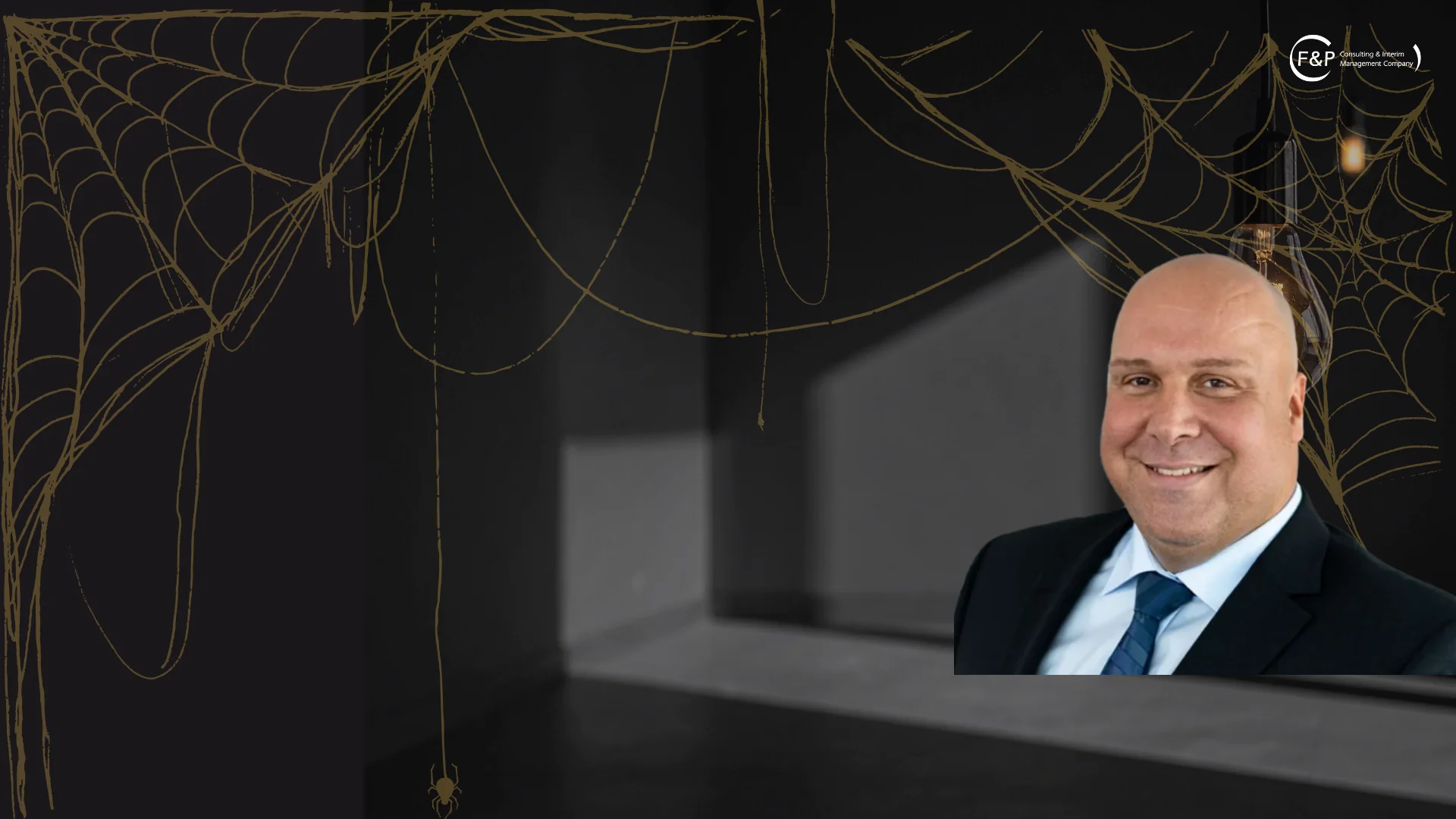Halloween special“The night when the test benches whispered”
A business horror story from China – told on a gloomy October evening
Sometimes projects begin like a fairy tale: with shiny contracts, ceremonial signatures and the euphoria of a new, big task. And sometimes this fairy tale imperceptibly turns into a nightmare. In my case, it all started with a handshake – and ended with a whisper that still wakes me up some nights years later.
The moment of shock – when darkness crept into the factory hall
As a supplier, we had won a major order that outshone anything we had ever done before: a complete test bench landscape for a German car manufacturer – and not just anywhere, but in China. It involved so-called end-of-line test benches, the last links in a production chain. Without them, not a single vehicle came out of the factory. If these systems failed, an entire plant would come to a standstill.
It was a key project for the customer. For us, it was an opportunity to gain an even better foothold in China. And for me personally – as head of the business unit in China – it was a question of to be or not to be. My name was symbolically on every drawing, every order, every late delivery.
Even during the design phase, disaster was already flickering on the horizon. Drawings were incomplete, specifications contradictory, and communication with the German colleagues dragged on like chewing gum across time zones. Every meeting brought more questions than answers.
Nevertheless, we fought our way forward until the production approval finally came. I still remember the exact moment: the official letter on the table, a short sigh of relief in the office, the soft clapping of a colleague – as if we had just banished a demon. Little did we know that this was just the calm before the real storm.
The tension – The creeping decline of control
Our factory was located on the edge of an industrial city whose streets were noisy and chaotic by day, but almost eerily empty by night. When the fog rolled in from the sea, the area was transformed into a landscape of shadows in which even the whirring of the transformers sounded like a whisper.
Production began – and with it the struggle against invisible forces: weld seams that cracked under load. Machines that did not meet the specifications. Components that looked different from the CAD models. Suppliers who promised deadlines and came up empty-handed weeks later.
It was as if the project was cursed.
The customer – a German automotive group known for precision and discipline – was watching us with growing nervousness. The reports became sharper, the e-mails longer, the tone colder. Finally, the customer’s project manager announced that he was coming to China in person for the technical pre-acceptance.
He was supposed to stay for a whole week. Seven days full of tests, audits, discussions – and every hour a possible end to our credibility. We prepared ourselves like
Soldiers before an inspection: workshop tidy, cables neatly bundled, test stands in the best light.
And yet – deep inside me – the feeling grew that something was wrong. As if the air in the factory had changed. Heavier. Thicker. More expectant.
Then came Monday.
The man who disappeared in the dark
The first day of acceptance began soberly. Tables. Measurement logs. Troubleshooting. The customer spoke little, noted a lot. Our commissioning engineer, an experienced specialist from the parent company, was our trump card. Calm, competent, unwavering. We trusted him blindly.
Towards the afternoon, he asked for a short break – just a few minutes of fresh air. He didn’t come back.
At first we thought he was at the back of the hall. Then in the hotel. Then maybe in a cab on the road. But he had simply disappeared. No phone call. No sign of life.
The customer became agitated. “That’s unprofessional,” he said. I could feel the sweat running down between my shoulder blades.
The commissioning engineer only returned the next morning. Pale, sweaty, with a glazed look. He responded evasively to my questions, as if he could hardly explain to himself what had happened.
It happened again the next evening. As soon as the sun disappeared behind the gray skyscrapers, he was drawn out – into the streets, the bars, the shimmering night. As if an invisible call had seized him.
A colleague whispered: “He’s bewitched.” I laughed uncertainly. But deep down, I knew that something was really wrong.
The night world – temptation and decay
We followed him one evening. The customer had long since complained that work had come to a standstill. We had to understand what was happening.
He took us into a world that didn’t exist during the day. Narrow alleyways, flickering neon lights, music from cellars where time had stood still. Gambling tables, alcohol, laughter – and faces that disappeared in the smoke as soon as you recognized them.
Our commissioning engineer was sitting there, drinking, playing, laughing. No longer the engineer with safety goggles and measuring device, but a different person – exuberant, almost obsessed.
The customer, we later learned, had also become curious. And so the story took a turn that no project plan could have foreseen:
We started to take him with us.
First out of embarrassment, then out of strategy. If we couldn’t convince him with results, then perhaps with experiences. Our goal was simple:
We had to make him tired. So tired that he eventually gave in.
We accompanied him night after night. We drank together, sang in karaoke bars, drifted through markets where fried scorpions smelled of oil and adventure. The city became a living labyrinth of temptation and distraction.
Sometimes I thought I could hear the machines whispering in the hall at night – as if they were trying to warn us. But the next morning, when we stood in front of the test benches again, everything was silent. Just the steady hum of the transformers.
The turning point – between intoxication and salvation
The days blurred. The customer became paler, more exhausted, but also – strangely – more peaceful. We began to be on first-name terms. He laughed at our attempts to “motivate” him with Chinese schnapps.
On the tenth day it happened: we were sitting in a dark bar, the walls decorated with red lanterns, loud music, gloomy figures, the smoke of cigarettes hanging between us like fog. The customer looked at me for a long time and finally said in a hoarse voice:
“I don’t know if I’m dreaming or if this is really happening. But I’ve decided to trust you. You’ll do it somehow. I can’t do it anymore. I’m going home. And you… you deliver.”
Then he got up, paid, nodded – and disappeared into the night.
We looked at each other, stunned. We had won. Not through technology. Not through arguments.
But through… humanity, chaos and a bit of madness.
The haunting dissolves
The days that followed were quieter. Without the pressure of constant observation, we worked with concentration. The contractor had also calmed down – as if the city had now grown tired of him too.
We corrected drawings, adjusted systems, tested and improved. And suddenly – everything was working.
The test stands worked. The measured values were perfect. The factory was able to start up.
When the official acceptance was signed, the relief was almost physically palpable.
I remember the moment when the last test run was completed: the machine buzzed, the screen showed “OK” and someone tapped me on the shoulder. It was already dark outside – and yet the world felt light again.
The customer kept his word. He confirmed the pre-acceptance. Later, he even sent a letter of thanks.
“An extraordinary project,” it said. I smiled. If he only knew how extraordinary.

Teaching – between light and shadow
Even today, when I think about that time, I ask myself what the real lesson was. Perhaps this one:
– Technology can be planned. People cannot.
– Trust arises not only from competence, but also from closeness – sometimes from closeness to their abysses.
– And if you want to overcome crises, you have to be prepared to go where it is uncomfortable: into the shadow zones between responsibility, instinct and courage.
Der Inbetriebnehmer?
Er arbeitete später wieder diszipliniert, fast wie erlöst.
Der Kunde?
Er wurde zu einem Freund, ja fast zu einem Verbündeten. Denn wir verband ein unausgesprochenes Geheimnis: Ein gemeinsamer Tanz am Rand des Abgrunds, den niemand in Deutschland je erfahren durfte.
Und ich?
Ich lernte, dass Führung manchmal bedeutet, dorthin zu gehen, wo andere den Blick abwenden. Manchmal dorthin, wo es weh tut. Manchmal in dunkle Werkshallen. Manchmal in das Herz der Nacht.
The reverberations – The interim manager and the shadows
Every time I take on a new project today, I remember those days. The trembling, the fear, the flickering neon lights over unfinished machines.
And I know:
When a customer calls again because something has gone wrong – when there is panic, when systems fail, when nobody knows what to do – then a similar spook often begins.
But it looks different every time. Sometimes it is a system crash.
Sometimes a dispute in the management team.
Sometimes the gradual loss of trust.
But one thing is always the same: at some point, someone is needed to stay calm. Someone who brings light into the darkness. And who knows that even the longest night ends.
Conclusion – The spook can be solved
This story teaches more than any textbook:
- Crises are never just technical. They are human, emotional, irrational – and that is precisely why they can be solved.
- Trust is the strongest currency. Whoever wins it can lead even in darkness.
- And interim managers? We are not magicians – but sometimes it seems that way.
Because when the fog hangs over the halls and the machines whisper again, you need someone to listen – and carry on regardless.
At F& P, we do exactly that: we step in when it gets dark. We bring structure, calm and light.
And in the end, there is no fear, no whispering, no haunting. Just a successfully completed project.
Happy Halloween.
